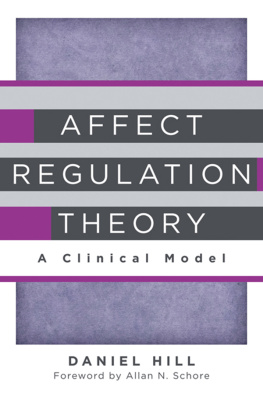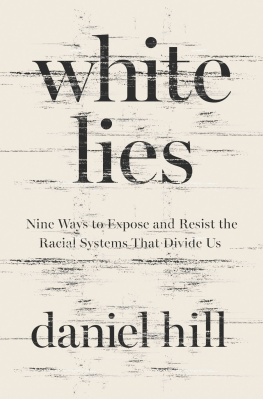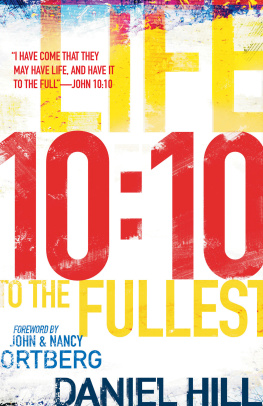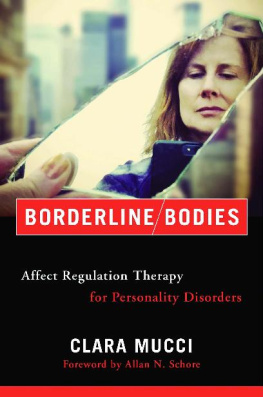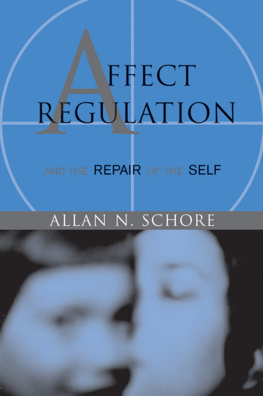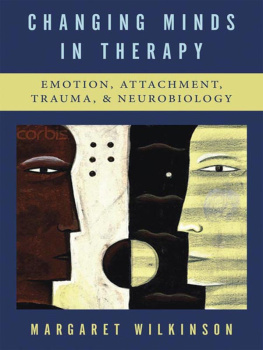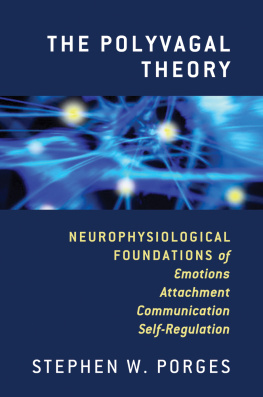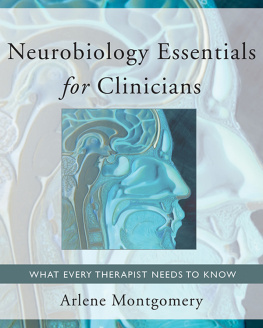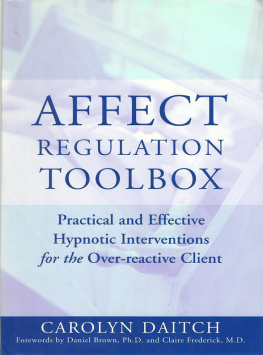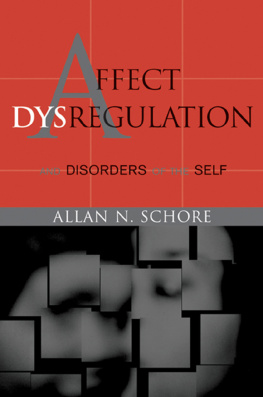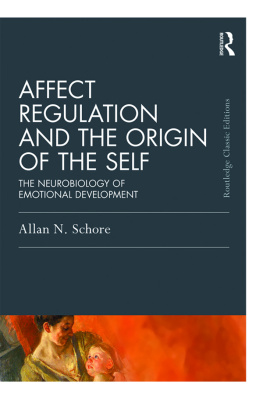Daniel Hill - Affect Regulation Theory: A Clinical Model
Here you can read online Daniel Hill - Affect Regulation Theory: A Clinical Model full text of the book (entire story) in english for free. Download pdf and epub, get meaning, cover and reviews about this ebook. publisher: W. W. Norton & Company, genre: Politics. Description of the work, (preface) as well as reviews are available. Best literature library LitArk.com created for fans of good reading and offers a wide selection of genres:
Romance novel
Science fiction
Adventure
Detective
Science
History
Home and family
Prose
Art
Politics
Computer
Non-fiction
Religion
Business
Children
Humor
Choose a favorite category and find really read worthwhile books. Enjoy immersion in the world of imagination, feel the emotions of the characters or learn something new for yourself, make an fascinating discovery.
- Book:Affect Regulation Theory: A Clinical Model
- Author:
- Publisher:W. W. Norton & Company
- Genre:
- Rating:4 / 5
- Favourites:Add to favourites
- Your mark:
Affect Regulation Theory: A Clinical Model: summary, description and annotation
We offer to read an annotation, description, summary or preface (depends on what the author of the book "Affect Regulation Theory: A Clinical Model" wrote himself). If you haven't found the necessary information about the book — write in the comments, we will try to find it.
Publisher: W. W. Norton & Company
Publication Date: August 31, 2015
ISBN 978-0-393-70726-7 (hardcover)
ISBN: 978-0-393-71132-5 (e-book)
Request #1573963005.61953
The rich, complex theory of affect regulation boiled down into a clinically useful guide.
Affect regulation theorythe science of how humans regulate their emotionsis at the root of all psychotherapies. Drawing on attachment, developmental trauma, implicit processes, and neurobiology, major theorists from Allan Schore to Daniel Stern have argued how and why regulated affect is key to our optimal functioning.
This book translates the intricacies of the theory into a cogent clinical synthesis. With clarity and practicality, Hill decodes the massive body of contemporary research on affect regulation, offering a comprehensible and ready-to-implement model for conducting affect regulation therapy. The book is organized around the four domains of a clinical model:
- a theory of bodymind;
- a theory of optimal development of affect regulation in secure attachment relationships;
- a theory of pathogenesis, in which disordered affect regulation originates in relational trauma and insecure attachment relationships;
- and a theory of therapeutic actions targeted to repair the affect regulating systems.
Specific chapters explore such subjects as self states, mentalization, classical and modern attachment theory, relational trauma (and its manifestations in chronic dissociation, personality disorders, and pervasive dissociated shame), supporting self-development in therapy, patienttherapist attunement, implicit and explicit therapeutic actions, and many more.
With Affect Regulation Theory, Daniel Hill makes an invaluable contribution to the growing field of psychotherapy that is reflective of a psychobiological perspective. The book is well written, well researched, and comprehensive. For any therapist seeking to broaden his or her theoretical knowledge base, with the ultimate goal of incorporating that information into clinical practice, I recommend reading this book first and foremost.
- Stan Tatkin, PsyD, MFT, clinician, researcher, teacher, and developer of A Psychobiological Approach To Couples Therapy (PACT)
Understanding affect is central to human psychology. From the start, Freud was concerned with the vicissitude of how emotions connected to ideas and to their transformations into symptoms and psychopathology. And yet psychoanalysis has been slow to develop a comprehensive theory of affects. Daniel Hill is a master teacher, and in Affect Regulation Theory he demonstrates how affects and their regulation and dysregulation are central to our sense of agency, authenticity, and interpersonal relations. He grounds his understanding in psychoanalysis, attachment theory, and neurobiology and illuminates the clinical relevance of relational trauma, dissociation, and self-states, thus integrating a comprehensive theory of mind, development, psychopathology, and psychotherapy. This book is essential reading for graduate students and clinicians.
- Lewis Aron, PhD, Director, New York University Postdoctoral Program in Psychotherapy & Psychoanalysis
Daniel Hill has written a beautiful, user-friendly translation and elaboration of the theories of Allan Schore, Daniel Siegel, and Peter Fonagy. Illustrating with clinical vignettes, Hill integrates affect regulation, early attachment trauma, and theories of neurobiology. This is an excellent book for the working clinician.
- Beatrice Beebe, PhD, Clinical Professor of Psychology in Psychiatry, NYS Psychiatric Institute, Columbia University
Daniel Hill: author's other books
Who wrote Affect Regulation Theory: A Clinical Model? Find out the surname, the name of the author of the book and a list of all author's works by series.

